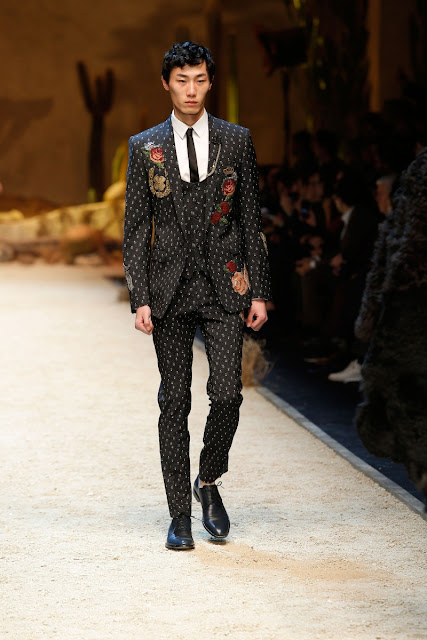Anri Sala - Answer Me
featuring Andre Vidal on saxophone
In February 2016, the
New Museum presents a major exhibition of the work of Anri Sala (b. 1974), one
of the most acclaimed artists to emerge in recent decades. The exhibition marks
the most comprehensive survey of his work in the United States to date.
Highlighting Sala’s
continuing interest in how sound and music can engage architecture and history,
“Anri Sala: Answer Me” features extensive multichannel audio and video
installations that unfold across the Second, Third, and Fourth Floor galleries,
composing a symphonic experience specific to the New Museum.
In his early video
works from the late 1990s, Sala used documentary strategies to examine life
after communism in his native Albania, observing the role of language and
memory in narrating social and political histories. Since the early 2000s, his
video works have probed the psychological effects of acoustic experiences,
embracing both music and sound as languages capable of conjuring up images,
rousing nostalgia, and communicating emotions. In subtle visual narratives,
Sala often depicts what appear to be fragments of everyday life, and his
intimate observations experiment with fiction to double as enigmatic portraits
of society.
Since the mid-2000s,
Sala’s works have featured musicians in both films and live performances: In
films such as Long Sorrow (2005) and Answer Me (2008), musicians intone
requiems for the failed histories dormant in the architecture surrounding them.
In Le Clash (2010), and Tlatelolco Clash (2011), organ-grinders stroll deserted
streets, amplifying a sense of alienation and uncertainty with their unexpected
interpretations of a familiar song. The exhibition also includes a recurring
live performance entitled 3-2-1 (2011/16), in which saxophonist André Vida
improvises alongside musician Jemeel Moondoc’s recorded lamentation in Long Sorrow,
expanding on the dynamics of free-jazz in a duet that changes with each
recital. Throughout these works, music resounds as both a cathartic release and
an incantation that evokes historical chapters that are neither distant nor
closed.
In recent works, Sala
has interpreted musical compositions in multichannel video and sound
installations that emphasize the perception of sound in relation to
architectural spaces. This exhibition features a new spatialization of Sala’s
The Present Moment (in B-flat) (2014) and The Present Moment (in D) (2014), in
which he rearranges Arnold Schoenberg’s “Verklärte Nacht” [Transfigured Night]
(1899) to create the sense that individual notes, abstracted from the
composition, travel freely throughout the gallery before accumulating and
playing in repetition as if trapped in a spatial impasse. The exhibition also
includes the US premiere of Sala’s striking installation “Ravel Ravel Unravel”
(2013), first exhibited at the 55th Venice Biennale, where Sala represented
France. In Ravel Ravel (2013), two interpretations of Maurice Ravel’s “Piano
Concerto for the Left Hand in D-major” (1929–30) are projected simultaneously
in a semi-anechoic chamber, a space designed to absorb sound. Sala recomposed
the tempo of the concerto for each musician so that the two performances
progress in and out of sync to produce the perception of musical echoes—a
paradoxical experience in a space in which actual echoes are impossible. The
dynamics of repetition and reverberation—rhetorical and compositional tropes in
Sala’s works—underpin the ideas explored in the exhibition and enrich the
historical dialogues embedded throughout the artist’s oeuvre.
Anri Sala was born in
1974 in Tirana, Albania, and lives and works in Berlin. He has exhibited
internationally for many years, with solo shows at Haus der Kunst, Munich
(2014); the 55th Venice Biennale (2013); the Centre Georges Pompidou, Paris
(2012); the Serpentine Gallery, London (2011); the Contemporary Arts Center,
Cincinnati (2009); the Museum of Contemporary Art, North Miami (2008); and the
Fondazione Nicola Trussardi, Milan (2005); among other venues. Sala has
received the Vincent Award (2014), the 10th Benesse Prize (2013), the Absolut
Art Award (2011), and the Young Artist Prize at the Venice Biennale (2001). He
has taken part in many group exhibitions and biennials, including the 12th
Havana Biennial (2015), the Sharjah Biennial 11 (2013), the 9th Gwangju
Biennial (2012), dOCUMENTA (13) (2012), the 29th São Paulo Biennial (2010), the
2nd Moscow Biennial of Contemporary Art (2007), and the 4th Berlin Biennial
(2006).
Live performances of
3-2-1 will occur in the Third Floor gallery throughout the run of the
exhibition. The first performance of the day begins at 11:30 a.m., with
additional performances occurring every hour until the Museum closes.
Every Wednesday
throughout the exhibition, Intervista (Finding the Words) (1998) and Nocturnes
(1999) will be screened in the New Museum Theater from 11 a.m. to 6 p.m.
The exhibition is
curated by Massimiliano Gioni, Artistic Director; Margot Norton, Associate
Curator; and Natalie Bell, Assistant Curator.
Sponsors
“Anri Sala: Answer Me”
is made possible by the lead support of Lonti Ebers and Bruce Flatt and Maja
Hoffmann / LUMA Foundation.
Major support is provided
by Maria de Jesus Rendeiro and João Oliveira Rendeiro.
Performance support is
provided by V-A-C Foundation.
Additional support is
provided by Institut Français.
Special thanks to
Galerie Chantal Crousel, Paris; Marian Goodman Gallery; and Hauser & Wirth.
Additional thanks to
Galleria Alfonso Artiaco, Naples; kurimanzutto, Mexico City; and Esther
Schipper, Berlin.
The accompanying
exhibition publication is made possible, in part, by the J. McSweeney and G.
Mills Publications Fund at the New Museum.
Media partner: Artnet
* * *






































































































